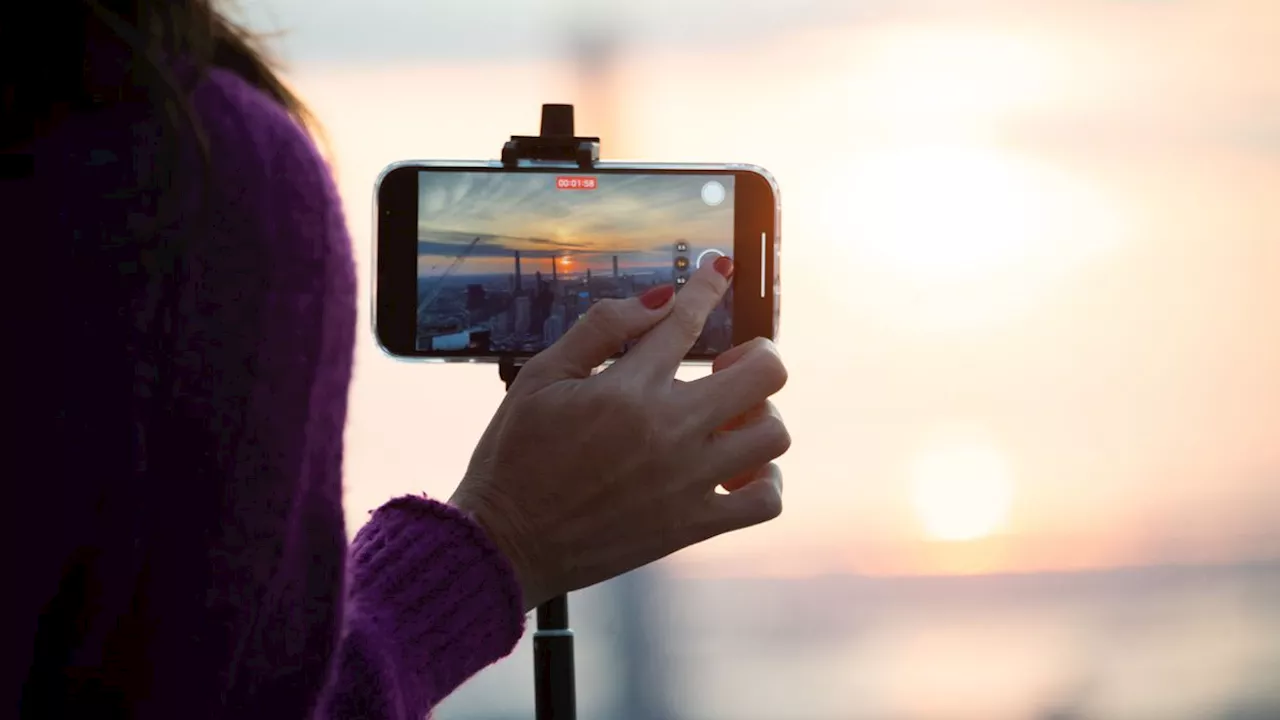Jamie Carter is a freelance journalist and regular Live Science contributor based in Cardiff, U.K. He is the author of A Stargazing Program For Beginners and lectures on astronomy and the natural world. Jamie regularly writes for Space.com, TechRadar.com, Forbes Science, BBC Wildlife magazine and Scientific American, and many others.
When a solar eclipse passes over North America on April 8, your first reaction may be to whip out your phone to capture the spectacular sight. But is it safe to record the solar eclipse with your phone? And if so, what's the best and safest way to do it?
This advice applies only to the eclipse's partial phases, which North Americans outside the 115-mile-long path of totality will see on April 8. Besides, if you point your smartphone at a partial solar eclipse, you won't get a good image. That's because whatever remains of the uneclipsed sun, even if it's just a sliver, will overwhelm your smartphone camera's sensor and overexpose your photo.
If you're within the path of totality, you will also see the partial phases of the eclipse. But midway through the 2.5-hour-long event, the sun's entire face will be blocked by the moon. For this brief period, called totality, you can remove the solar eclipse glasses from your eyes and the solar filters from your smartphone. This is the only time it is safe to look directly at the sun without proper eye protection.
By submitting your information you agree to the Terms & Conditions and Privacy Policy and are aged 16 or over.RELATED STORIESTotal solar eclipse April 2024: The 10 biggest cities within the path of totalityHow to make a solar eclipse viewer to safely watch the total solar eclipse on April 8
Nigeria Latest News, Nigeria Headlines
Similar News:You can also read news stories similar to this one that we have collected from other news sources.
 Science Fiction is Learning About Exoplanets From ScienceSpace and astronomy news
Science Fiction is Learning About Exoplanets From ScienceSpace and astronomy news
Read more »
Permanent Researcher Positions for Materials Science - Japan (JP) job with National Institute for Materials ScienceOverview National Institute for Materials Science (NIMS, Tsukuba, Japan) invites international applications from researchers who can conduct research in materials science. NIMS employs outstanding scientists from various countries who have abundant knowledge and strong research skills in materials science.
Read more »
Southern University of Science and Technology: Advancing Science and Technology in ChinaSouthern University of Science and Technology (SUSTech) is a public research university in Shenzhen, China. It aims to be a globally-renowned university that excels in interdisciplinary research and contributes to the advancement of science and technology. SUSTech's School of Medicine, founded in 2018, focuses on integrating medicine with sciences, engineering, and humanities to train leading medical talents.
Read more »
 Private Deaths in Public PlacesJamie Aroosi a lecturer in political science at Kingsborough Community College, CUNY.
Private Deaths in Public PlacesJamie Aroosi a lecturer in political science at Kingsborough Community College, CUNY.
Read more »
 In Miami with the world's first chief heat officerDenise Chow is a reporter for NBC News Science focused on general science and climate change.
In Miami with the world's first chief heat officerDenise Chow is a reporter for NBC News Science focused on general science and climate change.
Read more »
 SpaceX to launch third test of Starship rocket ThursdayDenise Chow is a reporter for NBC News Science focused on general science and climate change.
SpaceX to launch third test of Starship rocket ThursdayDenise Chow is a reporter for NBC News Science focused on general science and climate change.
Read more »
